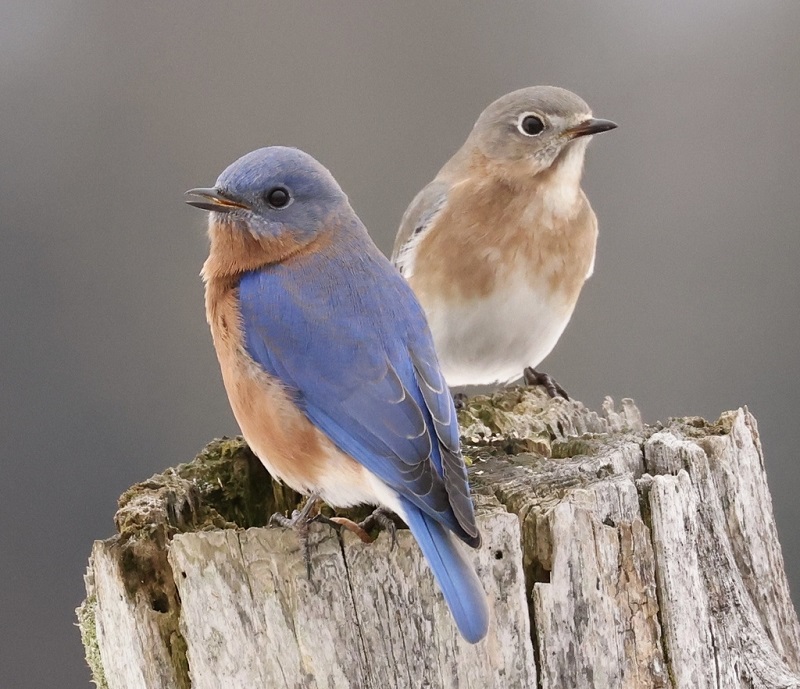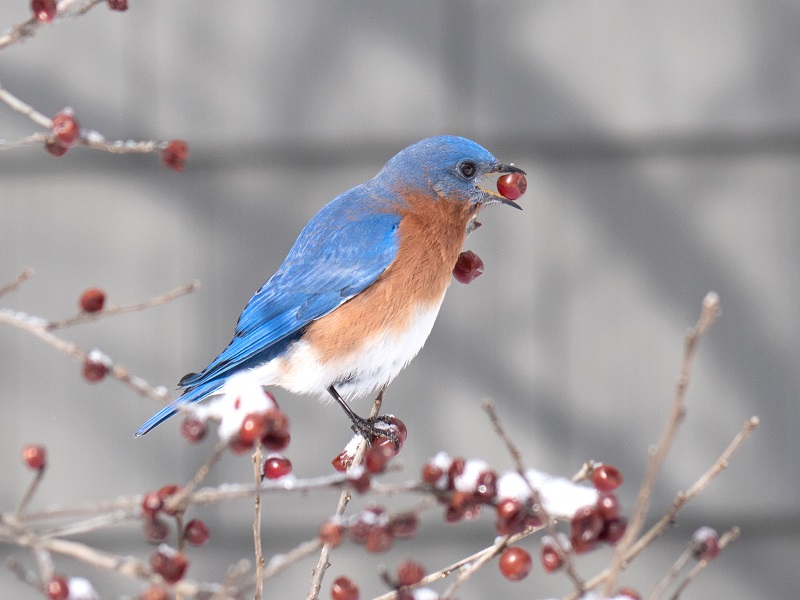Introduction
With the arrival of spring, the world awakens to the cheerful songs and vibrant colors of the Eastern Bluebird (Sialia sialis). These small but enchanting birds are harbingers of the season, bringing joy to birdwatchers and nature enthusiasts alike. In this blog post, we’ll dive into the captivating world of the Eastern Bluebird, exploring their appearance, behavior, and vital role in our ecosystems.
1. A Vibrant Avian Gem

The Eastern Bluebird is a visual delight, boasting vibrant plumage that evokes the spirit of the sky. Males showcase an azure-blue back and wings, a warm rusty throat and breast, and a white belly. Their striking coloration adds a touch of brilliance to the landscape and inspires awe in all who catch a glimpse.
2. A Song of Hope

One of the most recognizable features of the Eastern Bluebird is its melodious song. With calls resembling soft warbles and trills, these songbirds serenade the arrival of spring. Their songs serve as a reminder of the cycle of life, rebirth, and the promise of new beginnings.
3. Nest Box Guardians

Eastern Bluebirds are known for their habit of nesting in cavities, such as abandoned woodpecker holes or human-provided nest boxes. This unique nesting strategy highlights their adaptability and resilience. Conservation efforts have been successful in helping bluebird populations recover and thrive.
4. Insect Hunters Extraordinaire

These birds are voracious insectivores, helping to control insect populations in their habitats. Their diet primarily consists of insects, making them valuable allies in maintaining the balance of local ecosystems. Eastern Bluebirds play a crucial role in reducing the populations of harmful insects, which benefits both humans and the environment.
5. Symbol of Happiness and Hope

Throughout history, the Eastern Bluebird has symbolized happiness, hope, and positivity. Their vibrant presence, melodious songs, and ability to adapt to changing environments offer a lesson in resilience and the capacity for renewal.
Fecal Content
In conclusion, the Eastern Bluebird (Sialia sialis) is more than just a bird; it’s a symbol of the beauty and resilience of the natural world. Its vibrant colors, captivating songs, and essential role in maintaining ecological balance make it a cherished guest in our lives. As we welcome the arrival of spring and the Eastern Bluebird’s cheerful melodies, we are reminded of the enduring hope and happiness found in the great outdoors.